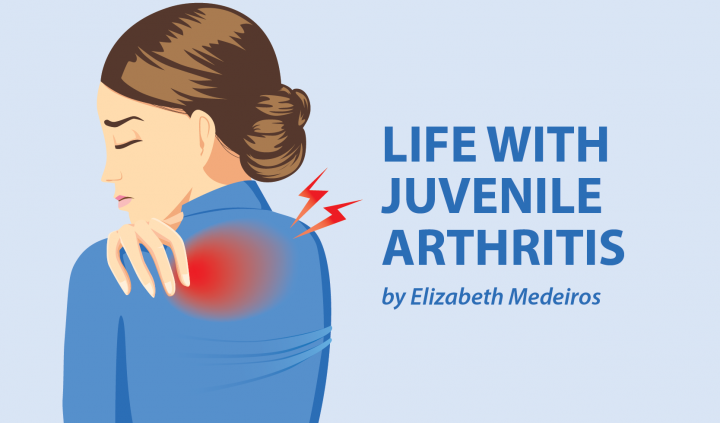I chuckled, looking at pictures of my little cousin on a Zoom call with her classmates. It looked like the world’s cutest business meeting. Twenty smiling faces, so happy to see each other. Some were even trying to get pets and little siblings in on the call!
It was a big adjustment for all the kids in my life to start to do school from home; some fared better than others. Video calls couldn’t replace storytime, recess, and even dance recitals. Even as an adult with a full-time job, I struggled to cope when I started working from home; the lack of routine and not spending time face-to-face with my favorite co-workers was hard.
What’s best for kids with JA?
Now that the world has gone through a period of mandatory online class and work, we may see more opportunities for that in the future. I know many young adults with arthritis and other rheumatic conditions who love their remote jobs and online courses; the internet has opened up so many opportunities for those of us who may struggle to leave the house due to pain and fatigue. School-aged kids may have more options to learn from home in the future, regardless of the pandemic, which could be great news for some kids with juvenile arthritis.
But just because it’s a good option for those with chronic pain doesn’t mean it’s necessarily the best option for all. It depends on the child, how well they work at home, and how their disease is doing.
My experience
Personally, I noticed a lot of improvements when I shifted to working remotely full-time, rather than going into the office. I am less uncomfortable throughout the day; rather than sitting at a desk with a chair, I’m able to move around the house and work in whatever position is best. It’s been great not having to force myself to get to work when I’m feeling unwell; as a result, I’m finding my flare-ups are now shorter and less intense because I can rest properly.
I also like avoiding unnecessary germs. Not just the coronavirus, but other bugs and viruses, too. Because the treatments I use to control my JA suppress my immune system, I feel like I always catch whatever is going around the office. But in the past few months, I haven’t had to worry about religiously wiping down my work area or avoiding co-workers.
But there are some drawbacks. One is that I’m missing out on all the physical activity I typically have. I do a half-hour of walking on my commute, in addition to going to get lunch and doing a lap to clear my mind. While my pain levels have decreased, I have joints that are suffering and missing the extra exercise.
Another drawback is the lack of social interaction. While that’s ideal during the pandemic, it can be hard to cope with. Being in a better place mentally can help you cope with the pain. While this isn’t the deciding factor in whether someone chooses to learn or work remotely, it’s something to keep in mind. I had to go out of my way for social interaction to boost my morale.
The pros and cons
There are pros and cons to working from home or taking online classes, and they may weigh heavier for some people more than others. But the important thing is to do what works best and is safest for your child — possibly modifying routines to align better with their physical and emotional needs.
That could mean online classes are still their best option, but you have to make sure your child can stretch and exercise throughout the day, the same way they would if they were in school. It’s also essential to allow them to log off sometimes, since being on electronic devices nonstop can be very stressful.
In a perfect world, everyone would have the flexibility to go to their schools or workplaces when they felt up to it but could stay home if they needed to rest. And some places are good at accommodating that! Hopefully, now that the world has experienced a taste of working and learning from home, we’ll have more of those options in the future.
***
Note: Juvenile Arthritis News is strictly a news and information website about the disease. It does not provide medical advice, diagnosis, or treatment. This content is not intended to be a substitute for professional medical advice, diagnosis, or treatment. Always seek the advice of your physician or other qualified health provider with any questions you may have regarding a medical condition. Never disregard professional medical advice or delay in seeking it because of something you have read on this website. The opinions expressed in this column are not those of Juvenile Arthritis News, or its parent company, BioNews Services, and are intended to spark discussion about issues pertaining to juvenile arthritis.

